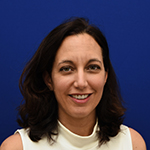שיטת ד"ר ביטס
דיון מתוך פורום רפואת עיניים לילדים ופזילה
ב"ה, לדר' נוימן שלום! שמעתי על שיטת דר' ביטס לריפוי הראיה, יש לי מס' די קטן במשקפיים - אחד וחצי על אחד ו3/4 ניראה לך שאני יוכל להיפטר מהמספר ע"י השיטה? , ואם כן אולי אתה יכול להמליץ לי לאן לפנות? בתודה מראש...
למיטב ידיעתי בכל פעם שהנושא נבדק בצורה מבוקרת לא נמצאה תועלת בשיטה. נסה לשאול באתר עיניים הכללי תודה.
מצאתי לך את החומר הבא (באתר העוסק quackery (אחיזת עיניים רפואית)) Eye-Related Quackery Russell S. Worrall, O.D. Jacob Nevyas, Ph.D. Stephen Barrett, M.D. Since ancient times, many people have held the mistaken belief that poor eyesight can be cured by special eye exercises. This belief was brought to its highest state of fruition by a one-time reputable physician, William Horatio Bates, M.D., who in 1920 published The Cure of Imperfect Eyesight by Treatment Without Glasses. In 1917, Bates teamed up with Bernarr Macfadden, a well known food faddist who published the magazine Physical Culture. Together they offered a course in the Bates System of Eye Exercises for a fee that included a subscription to the magazine. This venture met with considerable success and led many people to believe in the Bates System. However, the big impact of Bates's work materialized after publication of his book. This book attracted large numbers of charlatans, quacks, and gullible followers who then published scores of unscientific books and articles of their own on the subject of vision. Extolling the Bates System, these authors urged readers to "throw away" their glasses. Some of these writers even established schools. Contrary to scientific fact, Bates taught that errors of refraction are due, not to the basic shape of the eyeball or the structure of the lens, but to a functional and therefore curable derangement in the action of the muscles on the outside of the eyeball. All defects in vision, he said, were caused by eyestrain and nervous tension; and perfect vision could be achieved by relaxing the eyes completely. Bates warned that eyeglasses cause the vision to deteriorate; he also deplored the use of sunglasses. Bates claimed his exercises could correct nearsightedness, farsightedness, astigmatism, and presbyopia (the inability of older people to focus their eyes on nearby objects). They could also cure such diseases as cataracts, eye infections, glaucoma, and macular degeneration. His exercises included palming (covering the eyes and attempting to see blackness) and shifting or swinging the gaze from object to object. It should be obvious that these exercises cannot influence eyesight disorders as Bates claimed. Nearsightedness, farsightedness, astigmatism, and presbyopia result from inborn and acquired characteristics of the lens and the eyeball -- which no exercise can change. As for eye diseases, the only thing the exercises can do is delay proper medical or surgical treatment and result in permanent impairment of vision. The claims Bates made in advertising his book were so dubious that in 1929 the Federal Trade Commission issued a complaint against him for advertising "falsely or misleadingly." After Bates died in 1931, his office and teaching practices were taken over very successfully by his wife Emily with the help of Dr. Harold M. Peppard. Mrs. Bates had worked with her husband for a number of years, and Peppard was an ardent advocate of the Bates System. An edited version of Dr. Bates's book was published in 1940 as Better Eyesight Without Glasses. This version was revised several times and is still in print. Its recommendations include "sun treatment" in which the sun is permitted to shine on closed eyes and then on the sclera (white portion of the eye) while looking downward. The book states: "One cannot get too much sun treatment." Other dubious promoters followed Bates's path. One of the best known was Gayelord Hauser, popular food faddist and Hollywood favorite, who in 1932 published Keener Sight Without Glasses. By combining eye exercise and diet theories, Hauser furthered the sale of his own dietary products. In the mid-1950s, Philip Pollack, OD, a prominent optometrist in New York City, wrote a blistering critique of the Bates System [1]; and the vast majority of optometrists and ophthalmologists regard Bate's notions as wrong. Yet Bates still has advocates today. Some cling to "traditional" Bates techniques, while others use expensive computerized biofeedback machines. Their promotion is not limited to books and magazine articles but includes direct-mail campaigns with glossy brochures and toll-free numbers, pitching similar programs with new gadgets and mail-order videos. Beware of "Institutes" using well-known college towns in their names or "doctors" with dubious credentials, such as one we encountered with a degree from the "University in California" (not the University of California).

